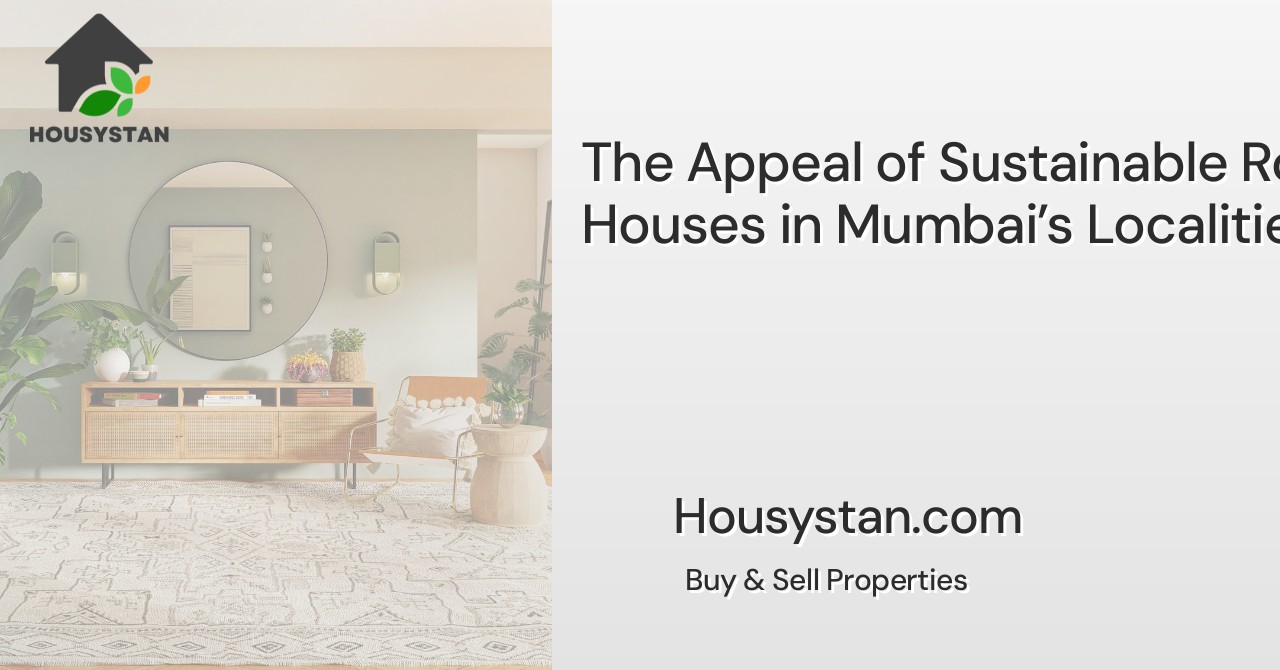The Appeal of Sustainable Row Houses in Mumbai’s Localities
Read latest blogs and articles from Housystan

The Information mentioned here was last updated on:
21/12/2025The Appeal of Sustainable Row Houses in Mumbai’s Localities
Mumbai, the financial capital of India, is witnessing a significant shift in residential preferences, with sustainable row houses gaining remarkable popularity across various neighborhoods. These eco-friendly homes provide an ideal balance of comfort, style, and environmental responsibility, making them highly attractive to both homebuyers and investors in Mumbai’s evolving real estate landscape.
Sustainable row houses in Mumbai are designed with modern, green architecture at their core. These residences often include features such as rainwater harvesting, solar panels, energy-efficient lighting, and natural ventilation systems. By minimizing energy consumption and maximizing resource efficiency, these homes reduce the ecological footprint of their occupants, helping the city move towards a greener future. Notably, localities like Bandra, Andheri, Chembur, and Powai have emerged as top destinations for such innovative housing solutions, reflecting the growing demand for sustainable living in prime Mumbai areas.
- Verified Tenants/Buyers
- Unlimited Property Listing
- Zero subscription/charges fee
Another significant advantage of row houses is the sense of community they foster. Unlike high-rise apartments, row houses offer residents private outdoor spaces such as gardens and terraces, while still promoting neighborhood interaction. This blend of privacy and communal harmony is especially valuable in bustling Mumbai, where personal space and social connectivity are both highly prized. Moreover, these homes are often situated in well-planned layouts with easy access to local amenities, schools, healthcare, and transportation, enhancing the overall quality of life for families and professionals alike.
The investment potential of sustainable row houses in Mumbai is also noteworthy. Properties that adhere to green building standards tend to appreciate faster and attract environmentally conscious buyers. With government incentives and increasing awareness about eco-friendly living, owning a sustainable row house in Mumbai’s prime localities is not only a smart lifestyle choice but also a wise financial decision.
In summary, sustainable row houses offer a unique combination of environmental responsibility, modern amenities, and community living. Their growing presence in prominent Mumbai neighborhoods caters to the city’s demand for innovative, future-ready housing. For those seeking premium residences that align with global sustainability trends, Mumbai’s eco-friendly row houses represent an exceptional opportunity to invest in both luxury and a healthier planet.